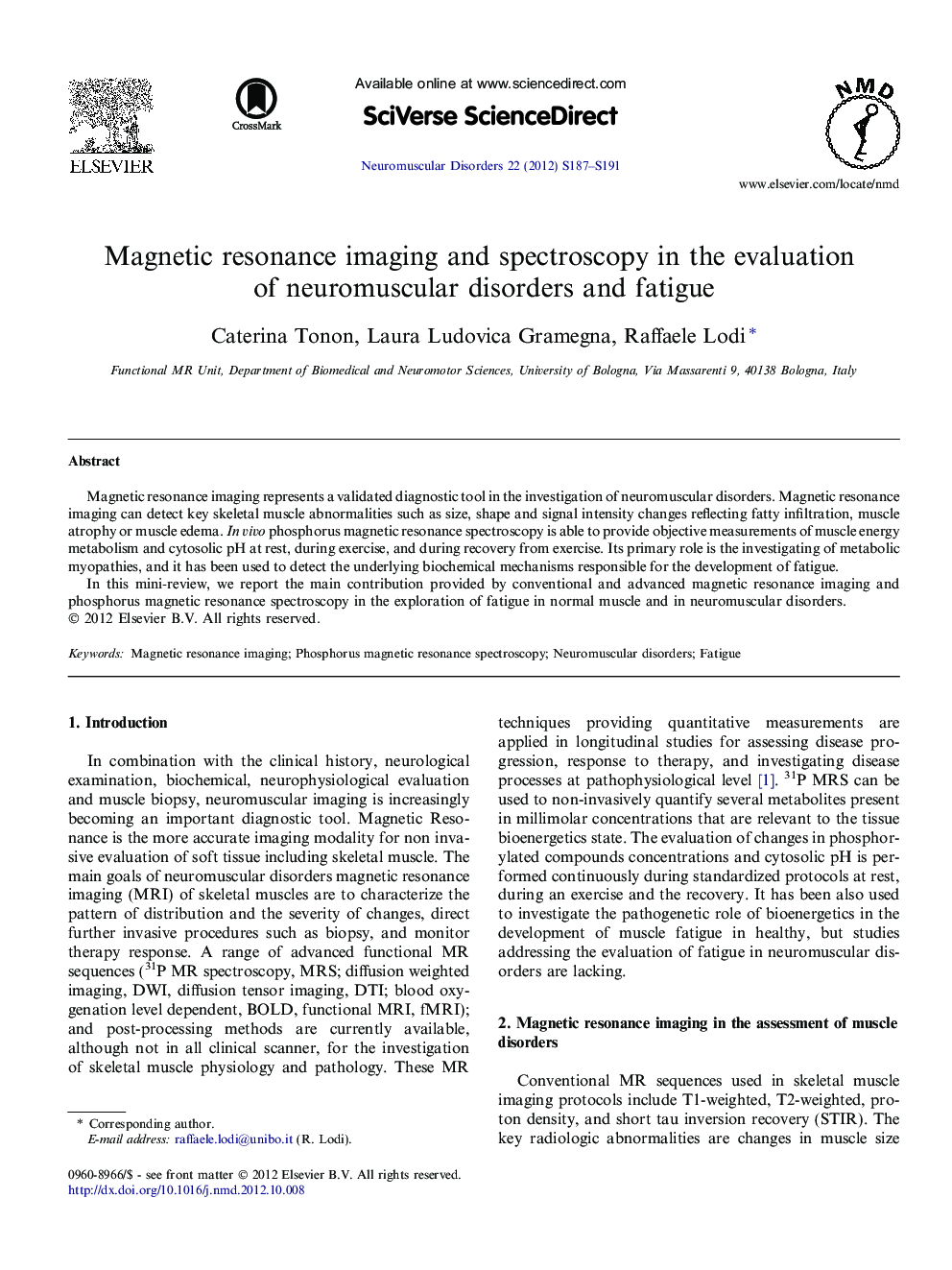| Article ID | Journal | Published Year | Pages | File Type |
|---|---|---|---|---|
| 6041941 | Neuromuscular Disorders | 2012 | 5 Pages |
Magnetic resonance imaging represents a validated diagnostic tool in the investigation of neuromuscular disorders. Magnetic resonance imaging can detect key skeletal muscle abnormalities such as size, shape and signal intensity changes reflecting fatty infiltration, muscle atrophy or muscle edema. In vivo phosphorus magnetic resonance spectroscopy is able to provide objective measurements of muscle energy metabolism and cytosolic pH at rest, during exercise, and during recovery from exercise. Its primary role is the investigating of metabolic myopathies, and it has been used to detect the underlying biochemical mechanisms responsible for the development of fatigue.In this mini-review, we report the main contribution provided by conventional and advanced magnetic resonance imaging and phosphorus magnetic resonance spectroscopy in the exploration of fatigue in normal muscle and in neuromuscular disorders.
